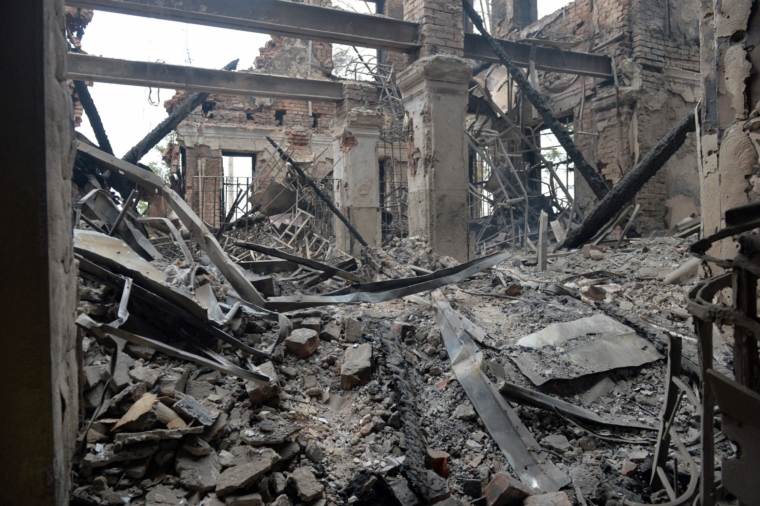For more than a decade, a convention has prohibited the use of cluster bombs, but neither Russia nor Ukraine have joined it.
Humanitarian organisations have accused Russia of employing cluster bombs during its invasion of Ukraine.
According to Amnesty International, an attack on a Ukrainian nursery “may constitute a war crime.”
A convention sponsored by more than 100 nations has prohibited the use of cluster bombs for more than a decade; however, neither Russia nor Ukraine are parties to the pact.
Here’s all you need to know about the weaponry and what Russia is accused of during the conflict with Ukraine.
What are cluster munitions, and how do they work?
Cluster munitions are weapons that disperse or discharge tiny projectiles or bomblets across a large area, potentially increasing deaths and damage.
The word “cluster munition” is defined as “a conventional munition that is designed to scatter or discharge explosive submunitions each weighing less than 20 kilogrammes, and includes those explosive submunitions,” according to the Convention on Cluster Munitions.
It excludes weapons that disseminate flares, smoke, or pyrotechnics, as well as weapons developed solely for aerial defence.
“Cluster weapons pose an immediate hazard to people during conflict by randomly spreading submunitions or bomblets across a large area,” Human Rights Watch adds.
“By leaving remains, such as submunitions that fail to detonate on contact and become de facto landmines, they continue to pose a concern post-conflict.”
Under the Convention against Cluster Munitions, which went into force in August 2010, more than a hundred countries pledged to never employ the weapons.
The United Kingdom, Germany, and France are among the countries that have signed the deal, while Russia, Ukraine, Israel, and the United States have not.
What charges have been levelled against Russia?
“A 220mm Uragan rocket landed cluster bombs on the Sonechko nursery and kindergarten in the town of Okhtyrka in Sumy Oblast,” according to Amnesty International.
According to the human rights organisation, three persons were killed in the incident, including a kid, and another child was injured. “The strike may constitute a war crime,” it added.
Human Rights Watch also claimed to have discovered the use of cluster bombs, claiming that Russia dropped a bomb in Vuhledar. According to the report, four individuals were killed in the strike.
Bellingcat, an investigative and verification website, announced on Sunday that it has discovered many areas in Ukraine where cluster bombs had been deployed.
It detailed two incidents, one at a pre-school in Okhtyrka and the other in Kharkiv, where it had confirmed claims of cluster munition assaults on social media.
“Open source material from Ukraine tends to imply that cluster bombs… are not being precisely targeted,” Bellingcat added. Instead, we’ve seen a number of incidents that have harmed individuals, schools, and hospitals.
“As the conflict moves deeper into urban areas, there’s a chance there may be a lot more cases of cluster bombs being used.”
“It is stomach-turning to watch an indiscriminate bombardment on a nursery and kindergarten where people are seeking safe sanctuary,” said Dr Agnès Callamard, secretary-general of Amnesty International. This should be examined as a war crime, plain and simple.
“As the human tragedy in Ukraine develops, everyone who commits war crimes should face the International Criminal Court (ICC) or another international criminal justice mechanism at the national or international level.
“It is critical that UN member states and the International Criminal Court (ICC) promptly explore ways to guarantee the timely and efficient gathering and preservation of evidence of any international law violations occurring in Ukraine.”
What are cluster munitions? Why the bombs are banned as Russia accused of using weapons in Ukraine

